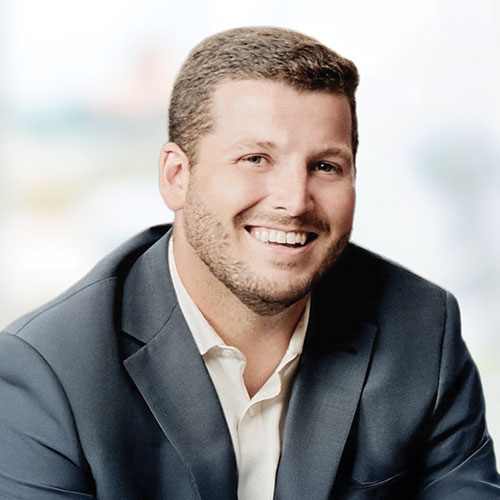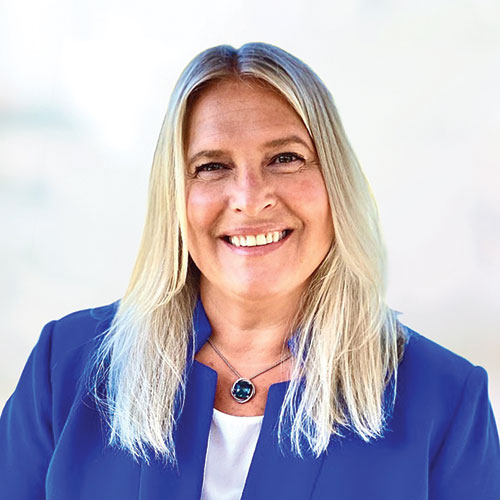
TOOLS
Login to access your documents and resources.
Steady through the storm: Communicating with participants through volatile times
Listen to this insight
~ 12 minutes long
Market volatility has been a constant for investors throughout 2025. Predicting when volatility will occur, how severe it will be, or what shape a recovery might take remains defiantly unknowable. For plan participants, such uncertainty can cause anxiety and prompt decisions that undermine retirement readiness years down the road. Plan sponsors, therefore, need to review their investment menus and ensure they have education strategies and plan features that help participants stay the course.
To explore strategies for working with both sponsors and participants through volatility, we spoke with Deena Rini, Senior Vice President, Managing Director of Retirement Plan Services and Wealth Management at Oswald Financial; Keith Huber, CFP®, Vice President, Financial Advisor at OneDigital; and Tina Schackman, CFA®, CFP®, Senior Retirement Plan Consultant at Benefit Financial Services Group.
Key takeaways
- Proactive education and communication before periods of volatility can prevent emotional decision-making and improve participant outcomes.
- Plan sponsors and advisors play a central role in shaping plan design, monitoring participant behavior and guiding participants toward long-term thinking.
- Guaranteed income solutions are gaining traction as a way to boost participants, confidence about retirement security during turbulent markets.
Using volatility as a teaching moment
While volatility can have a significant psychological effect on participants, plan sponsors are the ones who set plan design and often serve as the first point of contact during turbulent times. Keith acknowledges that the long-standing advice to “do nothing” still has merit, especially when paired with strategies like dollar-cost averaging. “Obviously the expectation is for a little bit more than that,” he adds, noting that the rebound in markets following the volatility of Q2 2025 has reinforced the value of staying invested.
Tina sees these periods as important opportunities for education. “Volatility can be a teaching moment,” she explains. “If we can explain that markets are resilient, that these are long-term investment vehicles, participants are more likely to stay the course and not make inappropriate decisions.” By framing volatility as part of the natural investment cycle, advisors can help participants avoid emotional reactions that might harm long-term outcomes.
Investment menu decisions often come under scrutiny during these times, and Tina stresses the importance of patience. “We don’t rush into making decisions about lineups. Yes, there will be funds during these periods that are going to underperform. But we have to look at how funds perform across different market cycles.” Keith adds that changes can create confusion among participants, who may interpret them as signals that their prior choices were wrong. “We know that, inherently, participants view change as a bad thing. If something on the investment menu changed, they question why they were in it in the first place.”
Deena emphasizes that the best preparation for these volatile moments happens well before they arrive. “Our communications with plan sponsors are about their demographics, their communication preferences and whether they like videos or in-person meetings. We can then customize our approach to whatever the participant demographic needs, and we start that education ahead of time.” This proactive groundwork allows advisors to step in with clarity and reassurance when markets turn choppy. Keith echoes that sentiment with a simple mantra: “When times are good is when you want to reassess. Unfortunately, when times are bad is when people typically reassess. Therefore, the key is to have a plan going into periods of volatility and stick to it.”
There are solutions at every age of retirement, and we want to be with the participant through that entire journey. It starts as soon as they want to start.”
Helping participants think long term
Education for participants is an ongoing process that should start early and continue throughout their careers. Deena stresses that this engagement should not be limited to those close to retirement: “We don’t just focus on meeting one-on-one with participants who are 50-plus. We focus on anybody that wants to meet with us. There are solutions at every age of retirement, and we want to be with the participant through that entire journey. It starts as soon as they want to start.”
Tina agrees, noting that engagement looks different depending on age and stage of career. “It is a lot easier with younger workers. They’ve got a longer time horizon, they are auto-enrolled, and we’re finding that participants in target date funds generally sit tight. But for people getting closer to retirement, we want to help them with a more detailed financial plan. We can start building distribution strategies. Do they have diversified taxable accounts? Do they have nonqualified assets? This allows us to get a holistic picture and bring in our team of financial planners.”
Evergreen educational content is another tool to help participants build healthy financial habits. Keith’s team runs campaigns at both the national and local levels. “At the very least, we have monthly webinars offered by our national team that cover a wide range of topics — building a budget, getting out of debt, 529 plans, HSAs, a general review of retirement planning, etc.” Deena’s team uses a library of short, engaging videos and then follows up with more customized programs that often lead to one-on-one meetings. Keith adds that personalization is essential: “We’ll have a conversation ahead of time with leadership about what’s important to their participants. We’ll also look at recordkeeper data to help support that conversation.”
That data is critical for spotting participants who might otherwise make suboptimal decisions, such as taking a loan or distribution during a market downturn. Tina highlights the challenge: while timely data can be hard to access, “it is important to make sure that the advisor is able to reach out in case of a loan or distribution that would otherwise be detrimental for the participant.” Deena frames the responsibility this way: “The average participant doesn’t understand plan design. They want to know how their money is growing and how they can reduce financial stress. We often get lost in fiduciary aspects and don’t pay enough attention to the psychological benefits of working with participants one-on-one to reduce their stress.”
What plan sponsors can do
Plan sponsors, working closely with advisors, are in a strong position to spot and address troubling patterns in participant behavior. Keith emphasizes careful monitoring: “We look for people making investment changes, but we have to contextualize that change. It could be people seizing market opportunities or just someone who wasn’t invested appropriately getting help. But if we see that the cash equivalents are 2% of a plan in March 2025 and by May it’s 15%, we know that’s a problem. The data can’t tell us the full story, but we see that as a great opportunity for some targeted education about staying invested and the value of dollar-cost averaging.”
Deena’s team also uses data trends as triggers to engage participants: “If someone asks to take a loan or a hardship withdrawal, we encourage them to talk to us first. A one-on-one session can help reduce impulsive behavior, so we like to future-proof by having these processes in place.”
Tina’s team focuses on making sure the plan structure itself can help mitigate issues during volatile periods. “We started looking at making sure that plans have a variety of distribution methods, which to me is basic blocking and tackling. We are also looking at plan structure for potential trade-offs, as our clients want to have healthy participation, but they’re also conscious of the fact that rising participation could increase their match cost.”
For Deena, customization is the best way to make education stick. “We love case studies that are applicable to the participant. If we go into a specific demographic — say a restaurant group — it is important that when we are educating, talking about diversifying, investing for the long term, we are giving people access to advisors that understand their specific situation.”
The role of guaranteed income solutions
The other part of the volatility conversation centers on decumulation — helping participants near or in retirement ensure they don’t see a precipitous drop in income or account balances. For Tina, guaranteed income solutions are still in relatively early stages of adoption, but she is beginning to build them into conversations with clients as part of overall plan design, particularly in relation to systematic withdrawals.
Keith highlights the psychological comfort they provide during market swings: “During a period of market volatility, when I talk to people, they’re not worried necessarily about what they’ve lost on paper, they’re worried that it’s not over. They want to know how to invest knowing that they’re going to be living off those savings. When we’re crafting a portfolio, we’re talking about risk. And guaranteed income solutions are a way to help manage that risk.”
Deena stresses the need to begin these conversations well before retirement: “We want to start that conversation 10 years before retirement, looking at the design of the plan, the solutions we have in place, target dates, managed accounts, dynamic QDIA options. If there’s a place for guaranteed income solutions, we certainly would like to discuss those with the plan sponsor. Our organization is an insurance-owned business, so we look at guaranteed income solutions like insurance for participants’ savings. It’s all about looking at the demographics of the plan and making sure that we understand the products we’re putting in.”
For Tina, the biggest hurdle is scaling individualized advice: “Participants want to know that they can have a percentage stream of income to help with fixed costs in retirement. But they need guidance on when and how much to annuitize. It is going to be advisors who have to help with that, but our ability to scale and do that on an individual basis will be a challenge.”
Continue reading

Endnotes
1. Any guarantees are backed by the claims-paying ability of the issuing company. Past performance is no guarantee of future results. Guarantees of fixed monthly payments are only associated with fixed annuities.
This material is not intended to be a recommendation or investment advice, does not constitute a solicitation to buy, sell or hold a security or investment strategy and is not provided in a fiduciary capacity. The information provided does not take into account the specific objectives or circumstances of any particular investor, or suggest any specific course of action. Investment decisions should be made based on an investor’s objectives and circumstances and in consultation with their financial advisors. Financial professionals should independently evaluate the risks associated with products or services and exercise independent judgment with respect to their clients.
This material, along with any views and opinions expressed within, are presented for informational and educational purposes only as of the date of production/writing and may change without notice at any time based on numerous factors, such as changing market, economic, political, or other conditions, legal and regulatory developments, additional risks and uncertainties and may not come to pass. There is no promise, representation, or warranty (express or implied) as to the past, future, or current accuracy, reliability or completeness of, nor liability for, decisions based on such information, and it should not be relied on as such. This material should not be regarded by the recipients as a substitute for the exercise of their own judgment.
Important information on risk
Past performance is no guarantee of future results. All investments carry a certain degree of risk, including the possible loss of principal, and there is no assurance that an investment will provide positive performance over any period of time. Certain products and services may not be available to all entities or persons. There is no guarantee that investment objectives will be achieved. See the applicable product literature for details.
Nuveen, LLC provides investment solutions through its investment specialists.
CFA® and Chartered Financial Analyst® are registered trademarks owned by CFA institute.






